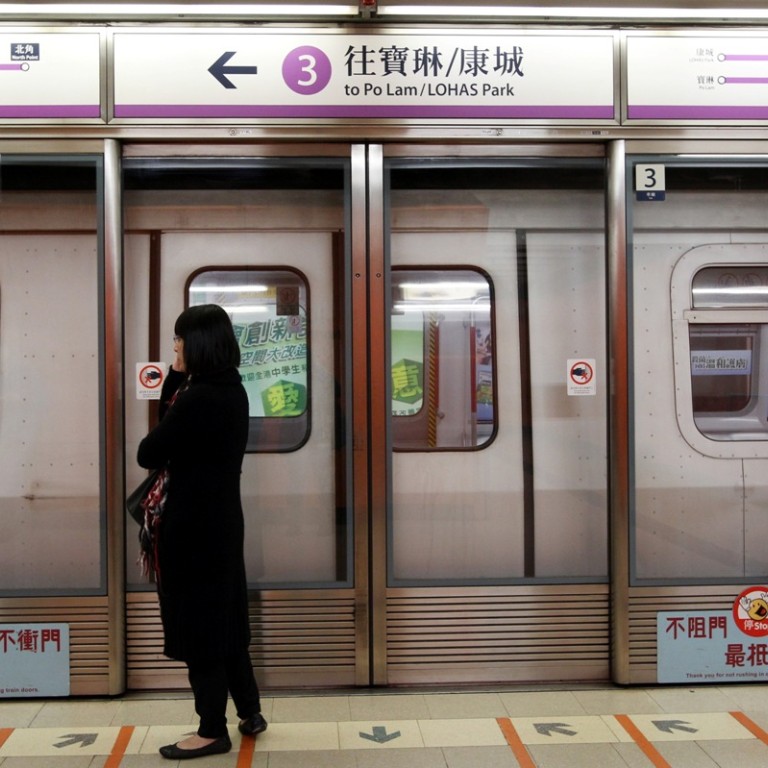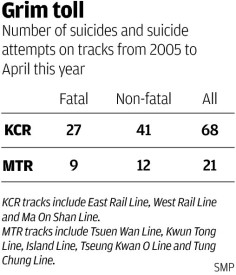
Delays on MTR link, lack of platform doors seen as suicide risk
Delays on the MTR link between Sha Tin and Central leave stations without screen doors, prompting concerns about preventable deaths
Delays to the long-awaited Sha Tin-to-Central link could have a human cost, suicide-prevention experts warned as they called on the MTR Corporation to speed up installation of platform safety doors at stations.
A total of 22 stations on the East Rail and Ma On Shan lines still lack doors, leaving open access to the track. They will be installed as part of the work on the new railway, which is due to open in 2018 but is behind schedule.
From 2005 to April this year, 27 people took their own lives on stations run by the former KCR - including all of those without platform doors. In the same period, Transport Bureau figures show, nine people killed themselves at other MTR stations, with none since 2011.
Yip said that for almost a decade, his research team had urged the MTR to install doors at all platforms because they have been proved to prevent suicides and accidents.
"It's not just for suicide prevention, it's for accidents, too. Some older people may slip, or even dogs," Yip said, in reference to an incident in August when a stray dog was killed after wandering on to the East Rail Line.
A spokeswoman for the MTR said gates would be installed on the two lines during the Sha Tin-to-Central project, which would involve platform modifications and a new signalling system.
"As some East Rail Line stations are about 100 years old, the platform structure has to be strengthened and the curvature at some platforms has to be adjusted," she said.
But with the HK$80 billion project 11 months behind schedule - in part because of the discovery of relics at the To Kwa Wan station site - Yip fears more unnecessary deaths.
"We have talked to the MTR for almost a decade and it is a matter of urgency now," he said. "When you go to Kowloon Tong or Sha Tin, there is quite a bit of risk … there are more cases at these two stations."
Yip said this was partly because of a significant increase in the number of passengers on the East Rail line, which serves cross-border travellers.
Stephen Law Chi-kin, who has researched suicide prevention in Hong Kong and Australia, echoed Yip's comments.
"Certainly, almost all incidences - both suicides and accidents - occurring at railway platforms would be prevented if the MTR could install the safety doors sooner," he said.
The former KCR lines - which include the West Rail, where platform doors have been installed - have seen 54 accidents since 2005, of which one was fatal. There were 37 accidents on the other lines, which were run by MTR before its 2008 merger.
"After the installation of the safety doors, the number of suicides has dropped but accidents and suicides on the MTR are still occurring," Yip said.
"When the MTR is given the right to run these facilities, one of the regulations is that they have to provide a safe means of transport," he added. "The data and research suggest there is something that you can do to prevent these. If you fail to do so, from my perspective, you have failed to discharge your obligation."
The MTR started installing platform doors in 1999 and by 2006, 30 stations on three lines all had screen doors. In 2008, platform gates were added to eight above-ground stations on the former KCR network.

